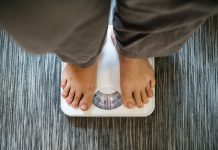
Physical activity has long been recommended as a preventive measure against type 2 diabetes.
However, new research from Harvard University and Harvard Medical School suggests that the timing of this activity could be critical.
According to a groundbreaking study by Dr. Caiwei Tian and Dr. Chirag Patel, morning and afternoon exercise can significantly reduce the risk of developing type 2 diabetes, while evening exercise shows no such benefit.
Understanding the Research
The study involved 93,095 UK Biobank participants with an average age of 62 years.
Using wrist-worn accelerometers to measure activity levels for a week, researchers calculated the metabolic equivalent of task (MET), a unit representing an individual’s physical activity level, encompassing all activities, including chores, walking, and vigorous exercise.
The activity was divided into three segments: morning (06:00–12:00 hours), afternoon (12:00–18:00 hours), and evening (18:00–24:00 hours).
For each 1-unit increase in MET during morning and afternoon activities, participants showed a 10% and 9% reduction in type 2 diabetes risk, respectively. Evening activity did not produce statistically significant results in this regard.
The Role of Consistency
Interestingly, the consistency or routine of physical activity wasn’t a significant factor.
Whether a person exercised sporadically but met the total required amount or did so consistently throughout the week, the risk factor for developing type 2 diabetes remained similar. It was the timing and intensity that mattered.
Unpacking Lifestyle Factors
Lifestyle factors like sleep and dietary habits were also considered. When these variables were taken into account, the timing-based associations became even more precise.
Furthermore, high-intensity exercise at any time was associated with a lower risk for type 2 diabetes.
Implications and Conclusions
The study underscores the importance of not just the amount, but also the timing of physical activity in mitigating the risk of type 2 diabetes.
The afternoon and morning windows emerge as the most advantageous periods for exercise, contrary to the prevailing notion that any physical activity is beneficial regardless of when it’s done.
The research also points to the added value of including higher-intensity activity in one’s routine.
This doesn’t negate the benefits of lighter activities but highlights the need for a diverse exercise routine to achieve the best health outcomes.
Finally, the study offers a holistic approach to understanding the relationship between physical activity and type 2 diabetes, considering lifestyle factors and using objective measurement tools like MET-hours for all daily activities.
The findings pave the way for more targeted recommendations on exercise routines to mitigate the risk of type 2 diabetes and could potentially influence future guidelines on managing and preventing this increasingly prevalent disease.
If you care about blood sugar, please read studies about why blood sugar is high in the morning, and how to cook sweet potatoes without increasing blood sugar.
For more information about brain health, please see recent studies about 9 unhealthy habits that damage your brain, and results showing this stuff in cannabis may protect aging brain, treat Alzheimer’s.
The research findings can be found in Diabetologia.
Follow us on Twitter for more articles about this topic.
Copyright © 2023 Knowridge Science Report. All rights reserved.



